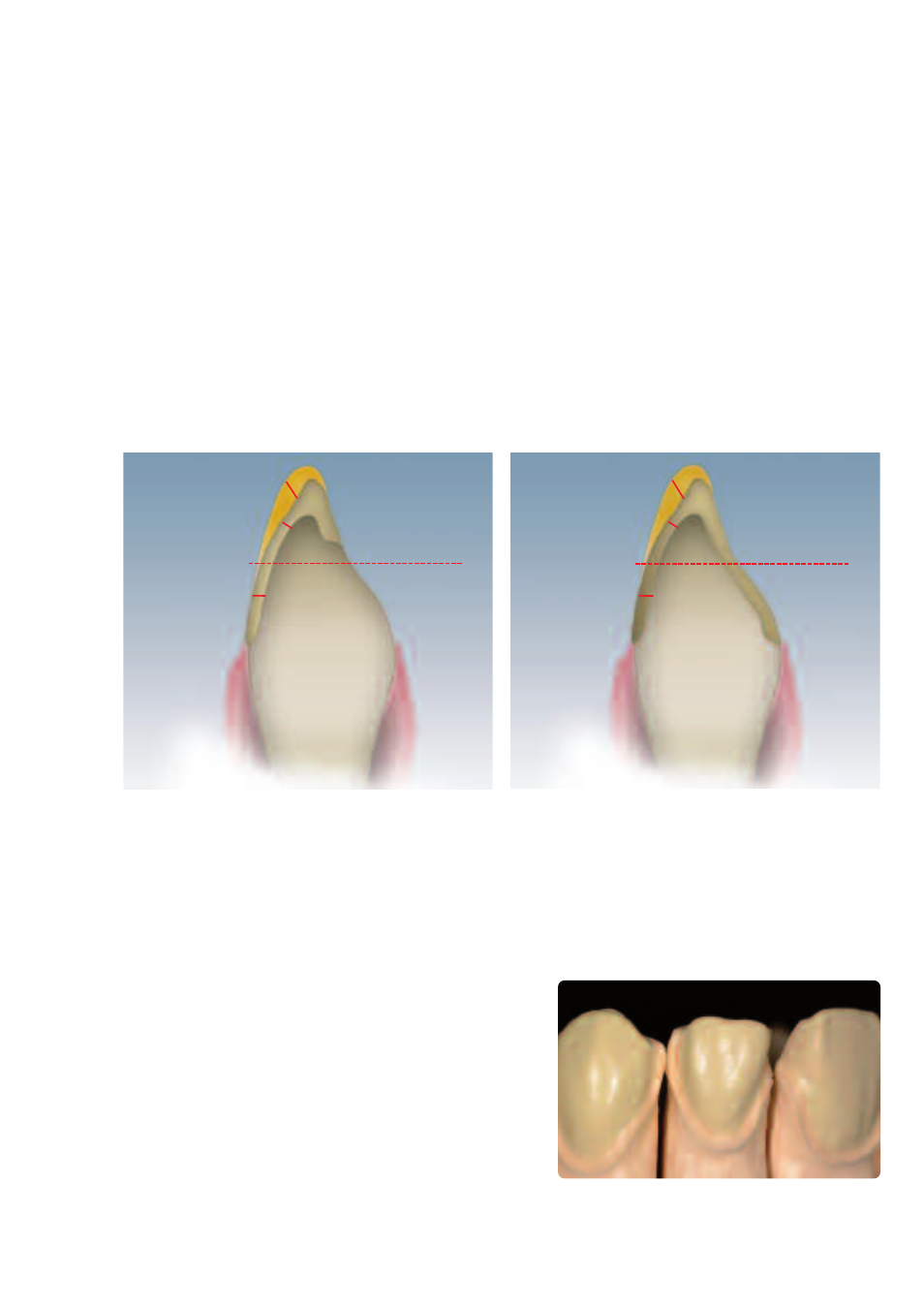Ivoclar Vivadent IPS Empress Esthetic User Manual
Page 36

36
Wall and layering thicknesses
In order to individualize restorations in the incisal area so that they correspond with their natural model, the IPS Empress
Esthetic restoration is additionally veneered using opalescent IPS Empress Esthetic Veneer ceramic materials. The cut-back
technique is very efficient if the fully anatomical anterior crown or the veneer are first designed according to the definite
final shape. After that, the incisal third is reduced and subsequently provided with an individualized aesthetic veneer.
The following wall and layering thicknesses have to be observed:
IPS Empress Esthetic Veneers / Anterior Crowns – Cut-back and layered
0.5 mm
0.5 mm
0.5 mm
approx.
0.5–1.0 mm
Veneer
Minimum thickness
of the restoration
after the
corresponding
reduction
= 0.5 mm
Layer thickness =
Limited layering area: labial,
incisal third
0.5 mm
approx.
0.5–1.0 mm
Minimum thickness
of the restoration
after the
corresponding
reduction
= 0.5 mm
Layer thickness =
Limited layering area: labial,
incisal third
Anterior crown
Fully anatomical, pressed veneer and anterior crown, which are reduced in the incisal area.
Preparing the model and the dies
Fabricate a working model with removable die segments as usual. The
application of a sealer is recommended to harden the surface and to protect
the stone die. However, the sealer layer must not result in any changes of the
dimensions of the stone die.
Subsequently, the spacer is applied as described below. Please be aware of the
fact, that the expansion of the investment material is coordinated with this
procedure.
– For anterior crowns, the spacer is applied in two layers up to max. 1 mm
from the preparation margin (spacer application 9–11 µm per layer).
– Two sealer layers are also applied up to max. 1 mm from the preparation
margin for veneers.
Sealer and spacer applied on the prepared model.
